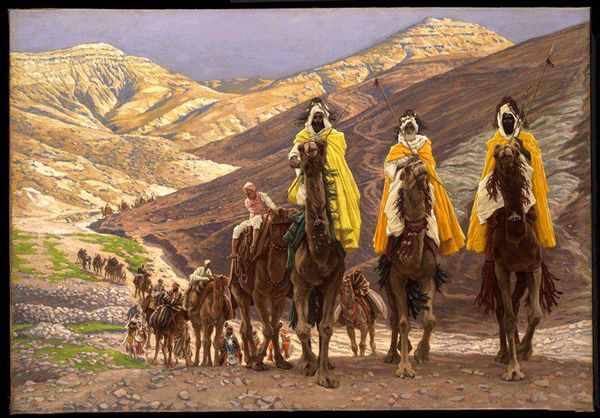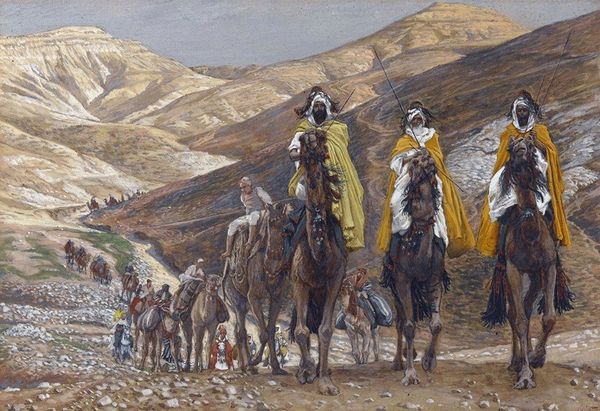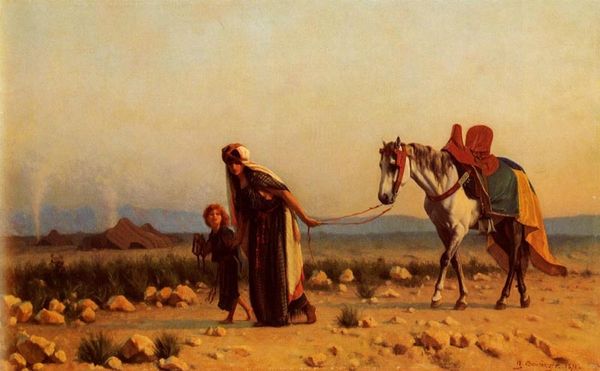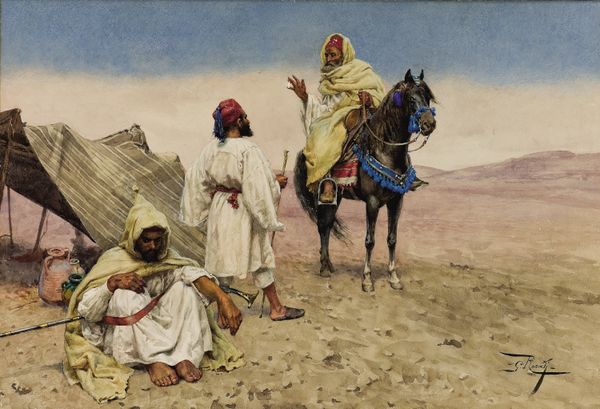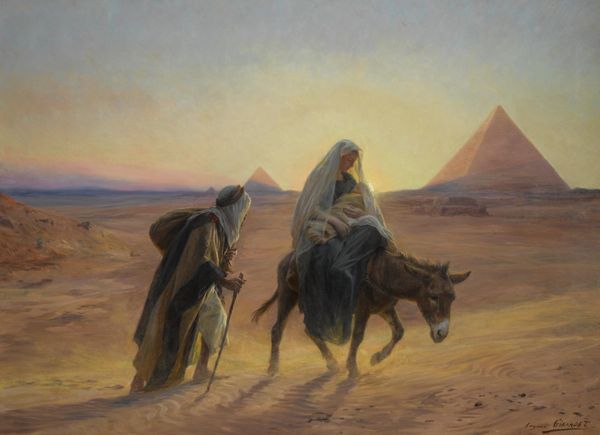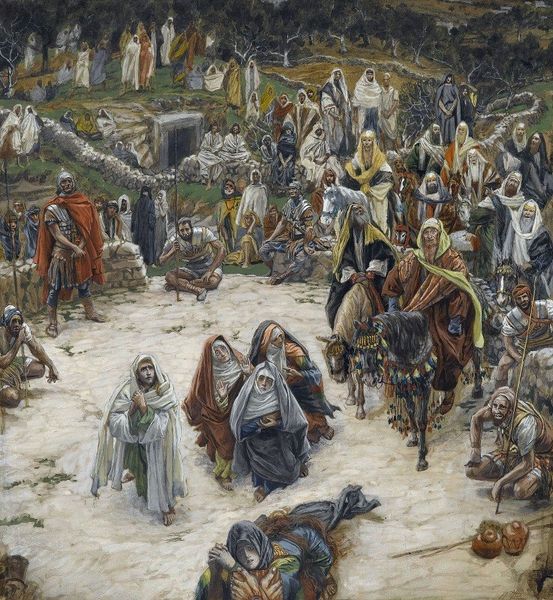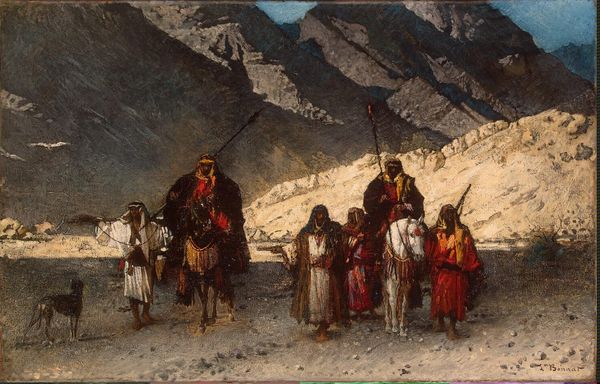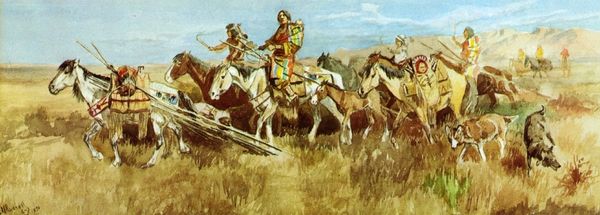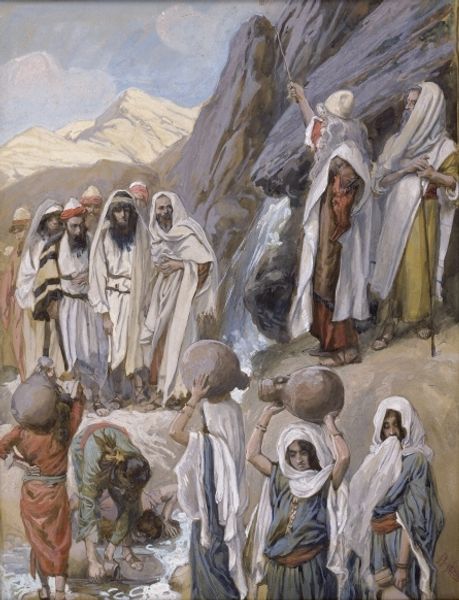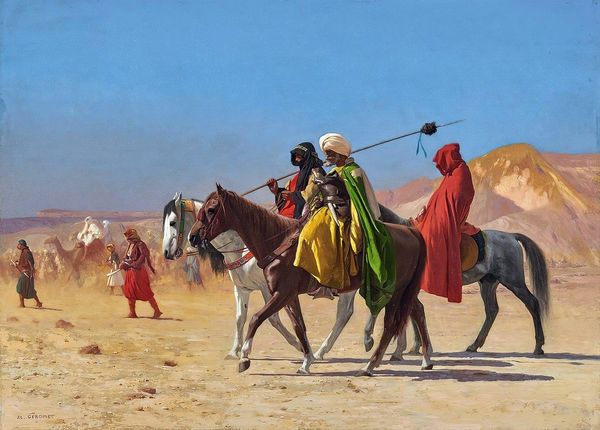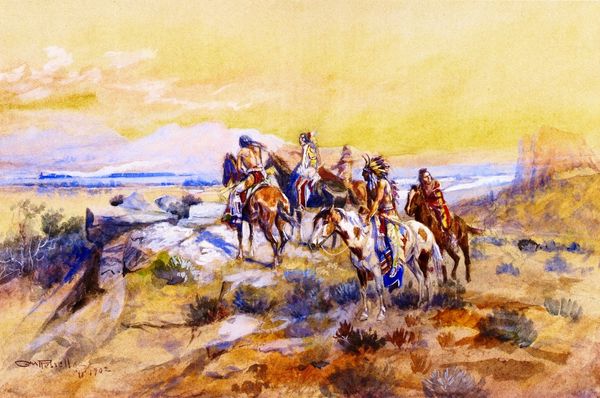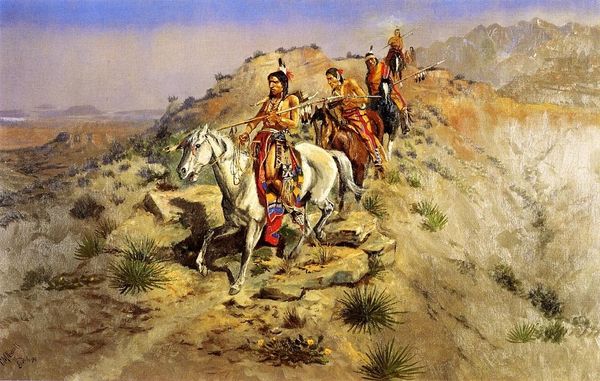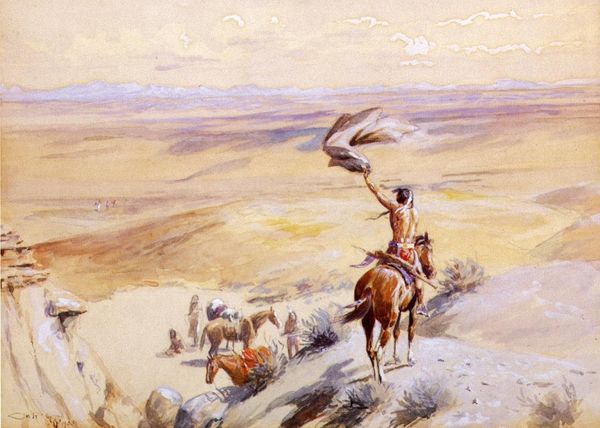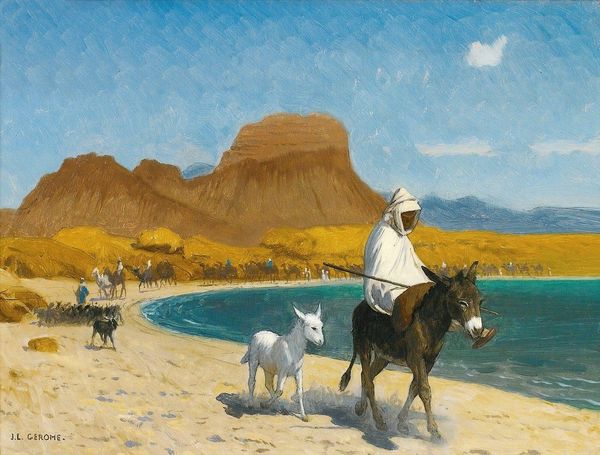
painting, watercolor
#
painting
#
landscape
#
figuration
#
oil painting
#
watercolor
#
group-portraits
#
orientalism
#
men
#
genre-painting
#
history-painting
#
watercolor
Copyright: Public domain
Curator: Before us hangs James Tissot's "Journey of the Magi," completed in 1894 and rendered in watercolor over graphite on paper. Editor: It’s a rather imposing composition, despite its medium. That long horizontal format and the diagonal pull of the terrain convey the scope of this arduous desert crossing, and lend it a solemn tone. Curator: Tissot presents the Biblical story through an orientalist lens, tapping into prevailing European fascinations with the East, using details in the clothing, architecture and the overall landscape setting to establish a believable depiction of the historic event. Editor: The tonal consistency throughout most of the landscape makes those luminous yellow robes stand out so vividly. They function almost as beacons, guiding our eyes along the Magi's procession through the rocky terrain. The sharp recession in depth, punctuated by that winding road in the background, is rather clever. Curator: Indeed. This journey isn't just geographic, but symbolic, echoing humanity's continuous pursuit of enlightenment and the deep cultural resonances it carries across civilizations. Tissot, known for his detailed depictions of modern life, here turns to historical narrative, framing the journey as both a specific event and a timeless spiritual quest. Editor: Do you think there's any effort at play to establish meaning by balancing the immediate figures with the receding secondary caravan, giving a sense of perspective? Curator: That juxtaposition certainly invites contemplation about individual roles within larger cultural narratives. Each member of this caravan contributes to this pivotal historical episode, imbuing the collective journey with profound significance. Editor: Considering Tissot's career, and how he moved between secular and sacred subject matter, I think the chromatic choices, as well as that formal layering we see, effectively blends a contemporary style with eternal religious concepts, inviting reflection on themes of faith, devotion, and the convergence of cultures. Curator: I see it similarly: Tissot gives tangible form to ideas and events that continue to shape identity and direction today. Editor: A thoughtful analysis indeed, bringing those echoes to light. Curator: And a thoughtful deconstruction from you; one never knows how a work will be interpreted across disciplines.
Comments
No comments
Be the first to comment and join the conversation on the ultimate creative platform.
